*NURSING > EXAM REVIEW > Chapter 17: Somatic Symptom Disorders Halter: Varcarolis’ Foundations of Psychiatric Mental Health (All)
Chapter 17: Somatic Symptom Disorders Halter: Varcarolis’ Foundations of Psychiatric Mental Health Nursing: A Clinical Approach, 8th Edition(Rated 5 Star)
Document Content and Description Below
1. Which assessment data would help the health care team distinguish symptoms of conversion (functional neurological) disorder from symptoms of illness anxiety disorder (hypochondriasis)? a. Volunt... ary control of symptoms b. Patient‘s style of presentation c. Results of diagnostic testing d. The role of secondary gains ANS: B Patients with illness anxiety disorder (hypochondriasis) tend to be more anxious about their concerns and display more obsessive attention to detail, whereas the patients with conversion (functional neurological) disorder often exhibit less concern with the symptom they are presenting than would be expected. Neither disorder involves voluntary control of the symptoms. Results of diagnostic testing for both would be negative (i.e., no physiological testbanks_and_xanax basis would be found for the symptoms). Secondary gains can occur in both disorders but are not necessary to either. See relationship to audience response question. PTS: 1 DIF: Cognitive Level: Apply (Application) REF: Pages 17-6 to 9 TOP: Nursing Process: Assessment MSC: Client Needs: Psychosocial Integrity 2. Which prescription medication would the nurse expect to be prescribed for a patient diagnosed with a somatic symptom disorder? a. Narcotic analgesics for use as needed for acute pain b. Antidepressant medications to treat co-morbid depression c. Long-term use of benzodiazepines to support coping with anxiety d. Conventional antipsychotic medications to correct cognitive distortions ANS: B Various types of antidepressants may be helpful in somatic disorders not only directly by reducing depressive symptoms and hence somatic responses, but also indirectly by affecting nerve circuits that affect not only mood but also fatigue, pain perception, GI distress, and other somatic symptoms. Patients may benefit from short-term use of antianxiety medication (benzodiazepines) but require careful monitoring because of risks of dependence. Conventional antipsychotic medications would not be used, although selected atypical antipsychotics may be useful. Narcotic analgesics are not indicated. PTS: 1 DIF: Cognitive Level: Understand (Comprehension) REF: Pages 17-18, 24 TOP: Nursing Process: Planning MSC: Client Needs: Psychosocial Integrity 3. A medical-surgical nurse works with a patient diagnosed with a somatic symptom disorder. Care planning is facilitated by understanding that the patient will probably a. readily seek psychiatric counseling. b. be resistant to accepting psychiatric help. c. attend psychotherapy sessions without encouragement. d. be eager to discover the true reasons for physical symptoms. ANS: B Patients with somatic symptom disorders go from one health care provider to another trying to establish a physical cause for their symptoms. When a psychological basis is suggested and a referral for counseling offered, these patients reject both. PTS: 1 DIF: Cognitive Level: Understand (Comprehension) REF: Pages 17-29, 30 TOP: Nursing Process: Planning MSC: Client Needs: Psychosocial Integrity 4. A patient has blindness related to conversion (functional neurological) disorder but is unconcerned about this problem. Which understanding should guide the nurse‘s planning for this patient? a. The patient is suppressing accurate feelings regarding the problem. testbanks_and_xanax b. The patient‘s anxiety is relieved through the physical symptom. c. The patient‘s optic nerve transmission has been impaired. d. The patient will not disclose genuine fears. ANS: B Psychoanalytical theory suggests conversion reduces anxiety through production of a physical symptom symbolically linked to an underlying conflict. Conversion, not suppression, is the operative defense mechanism in this disorder. While some MRI studies suggest that patients with conversion disorder have an abnormal pattern of cerebral activation, there is no actual alternation of nerve transmission. The other distracters oversimplify the dynamics, suggesting that only dependency needs are of concern, or suggest conscious motivation (conversion operates unconsciously). PTS: 1 DIF: Cognitive Level: Understand (Comprehension) REF: Pages 17-8, 9 TOP: Nursing Process: Planning MSC: Client Needs: Psychosocial Integrity 5. A patient has blindness related to conversion (functional neurological) disorder. To help the patient eat, the nurse should a. establish a ―buddy‖ system with other patients who can feed the patient at each meal. b. expect the patient to feed self after explaining arrangement of the food on the tray. c. direct the patient to locate items on the tray independently and feed self. d. address needs of other patients in the dining room, then feed this patient. ANS: B The patient is expected to maintain some level of independence by feeding self, while the nurse is supportive in a matter-of-fact way. The distracters support dependency or offer little support. PTS: 1 DIF: Cognitive Level: Apply (Application) REF: Pages 17-27, 28 TOP: Nursing Process: Implementation MSC: Client Needs: Psychosocial Integrity 6. A patient with blindness related to conversion (functional neurological) disorder says, ―All the doctors and nurses in the hospital stop by often to check on me. Too bad people outside the hospital don‘t find me as interesting.‖ Which nursing diagnosis is most relevant? a. Social isolation b. Chronic low self-esteem c. Interrupted family processes d. Ineffective health maintenance ANS: B The patient mentions that the symptoms make people more interested. This indicates that the patient feels uninteresting and unpopular without the symptoms, thus supporting the nursing diagnosis of chronic low self-esteem. Defining characteristics for the other nursing diagnoses are not present in the scenario [Show More]
Last updated: 1 year ago
Preview 1 out of 12 pages
.png)
Reviews( 0 )
Document information
Connected school, study & course
About the document
Uploaded On
May 04, 2021
Number of pages
12
Written in
Additional information
This document has been written for:
Uploaded
May 04, 2021
Downloads
0
Views
75
.png)

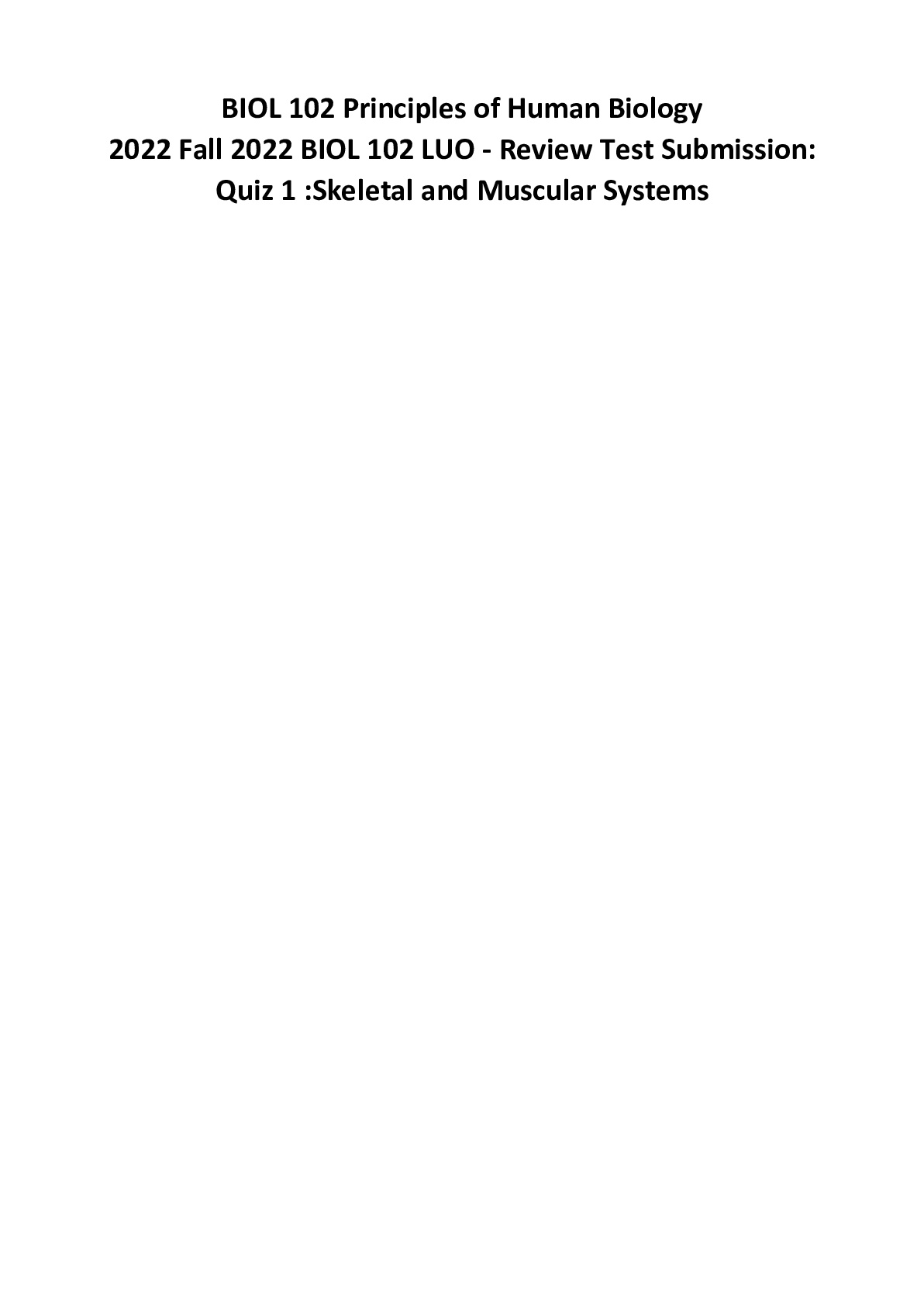
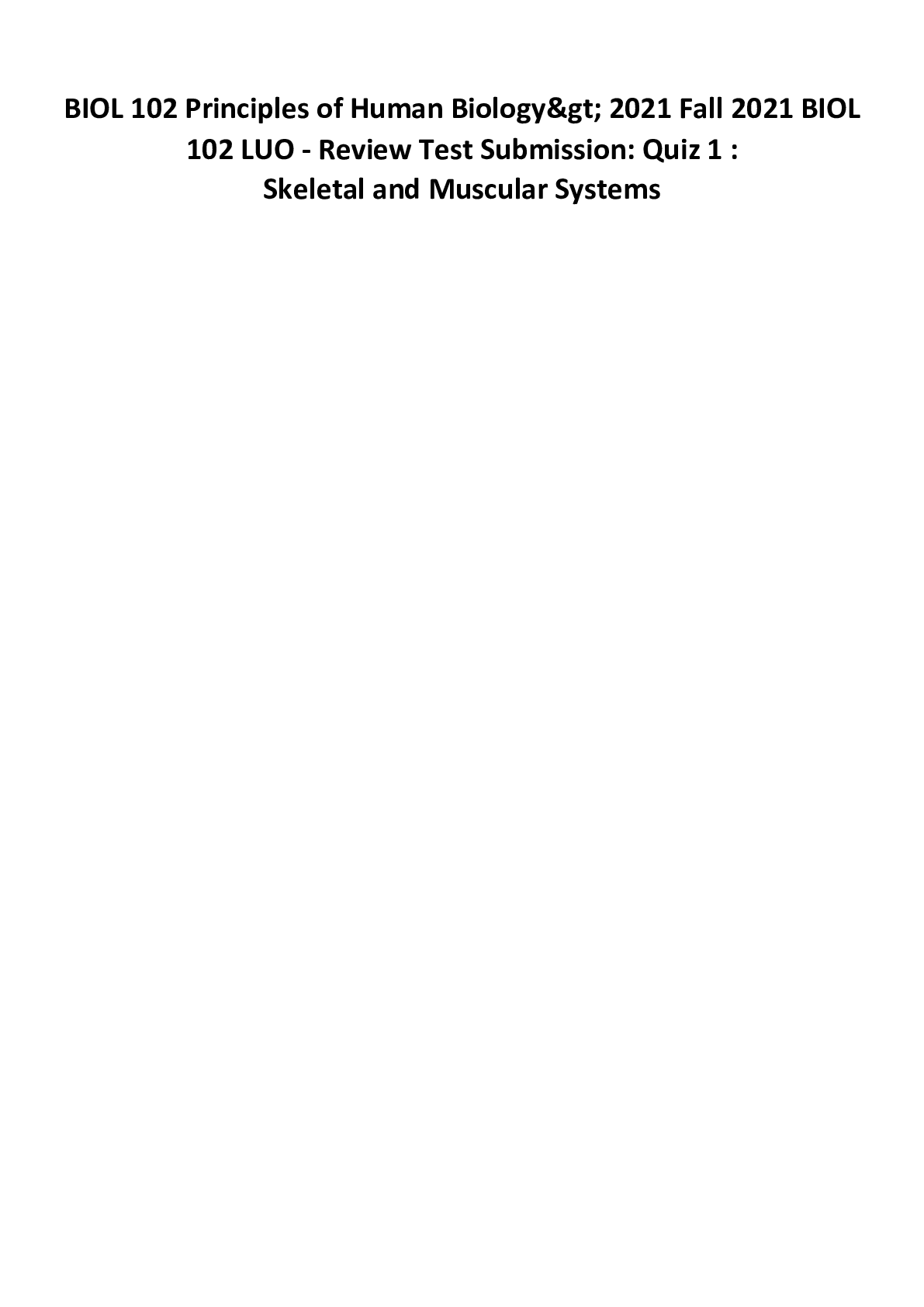
.png)

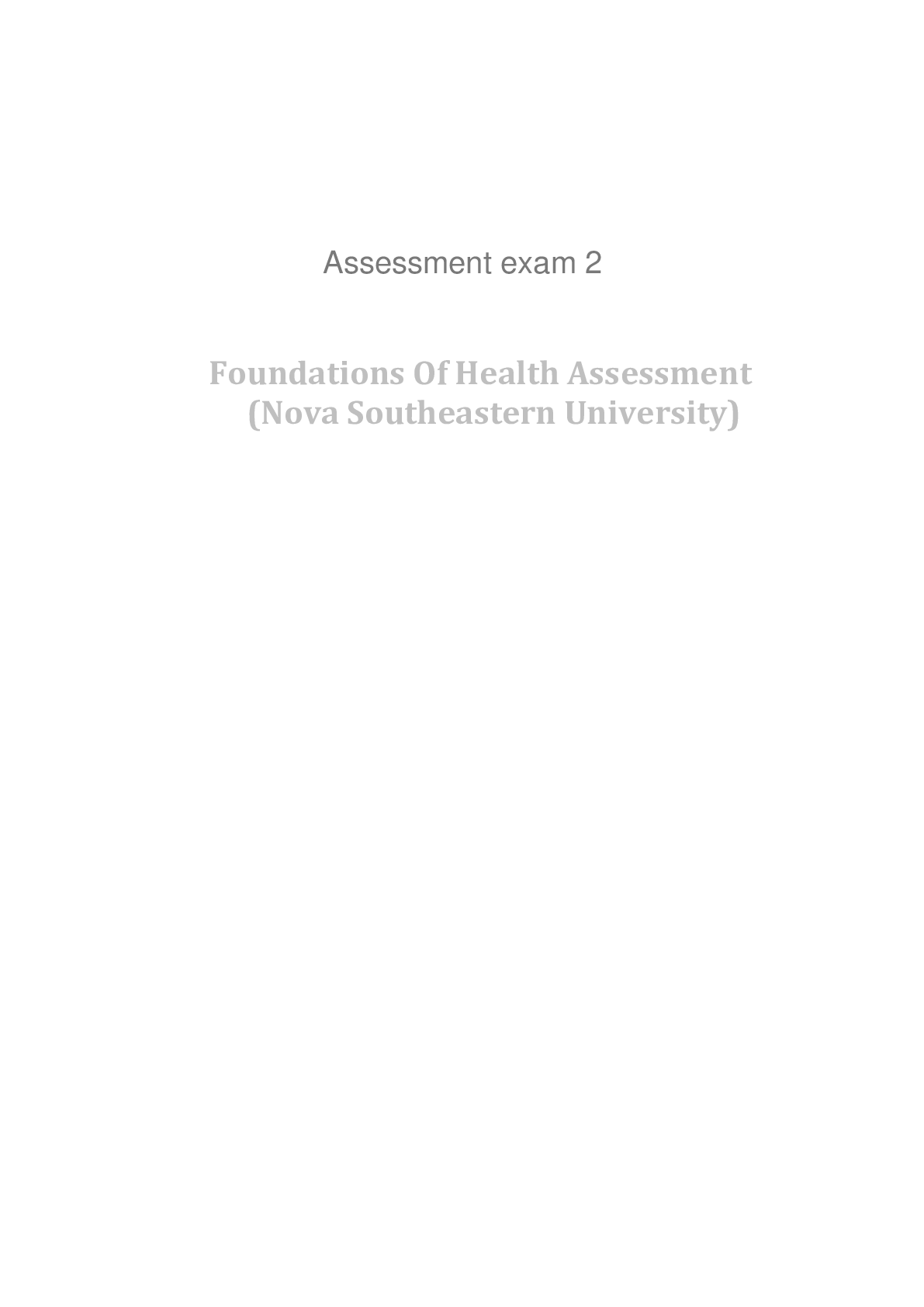
.png)
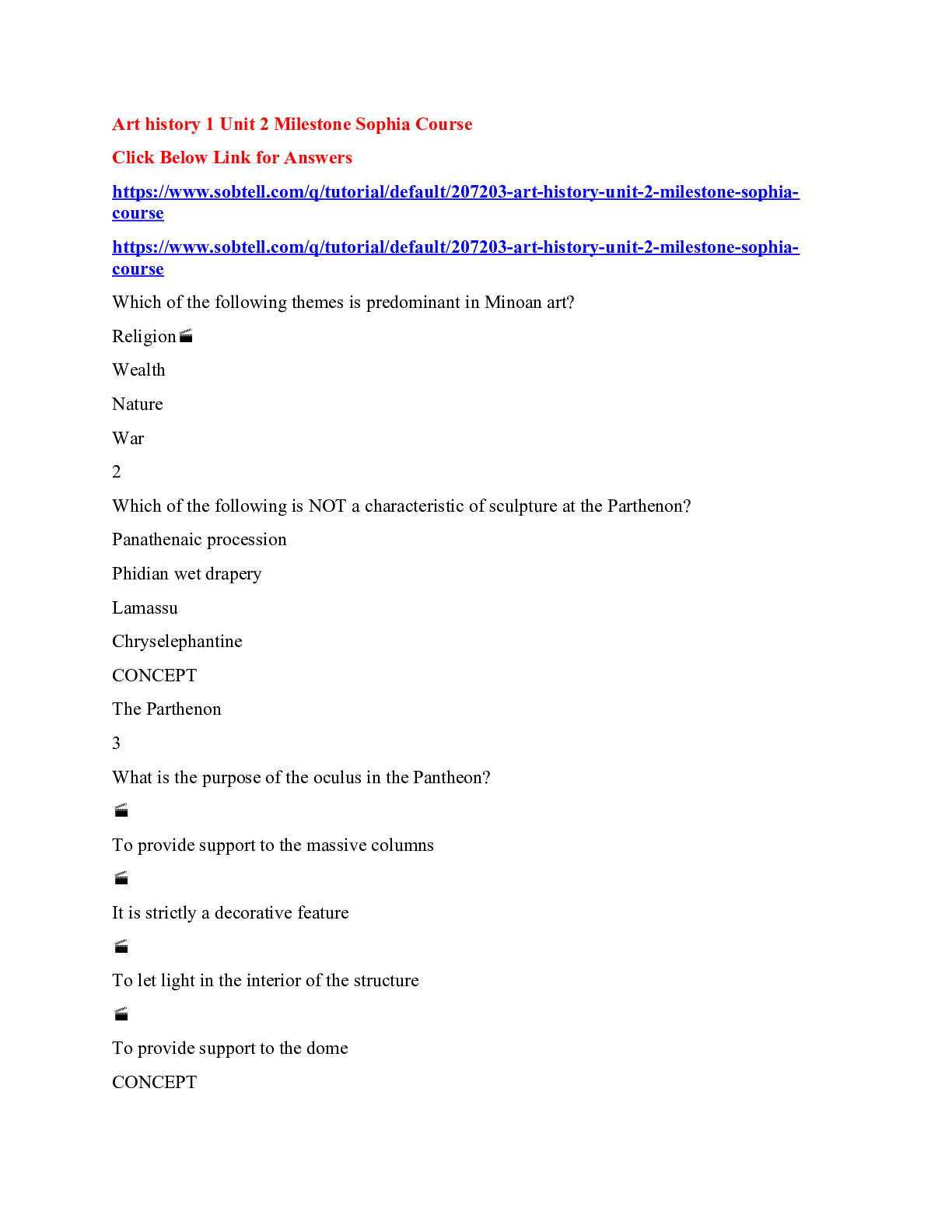




.png)
.png)


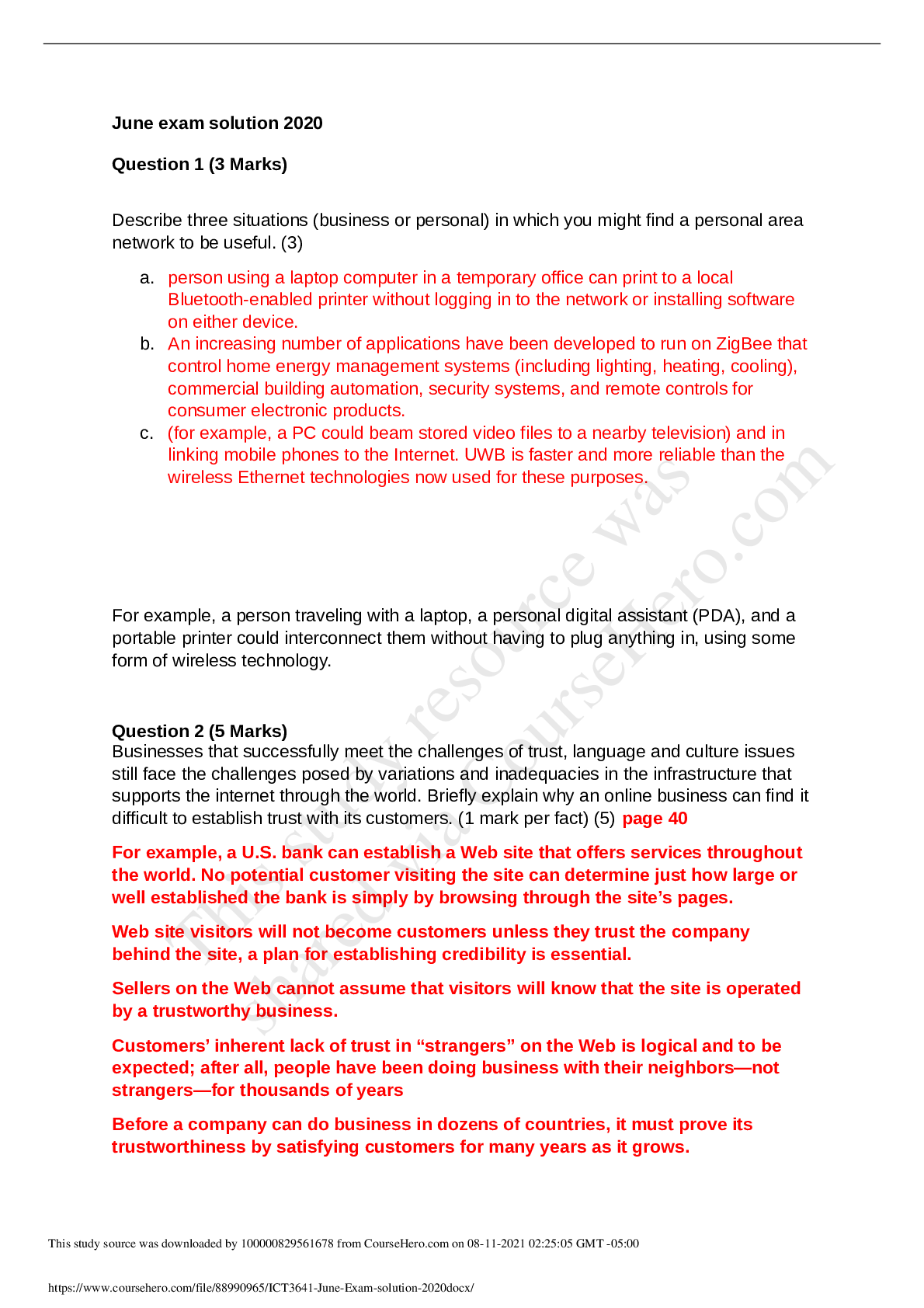

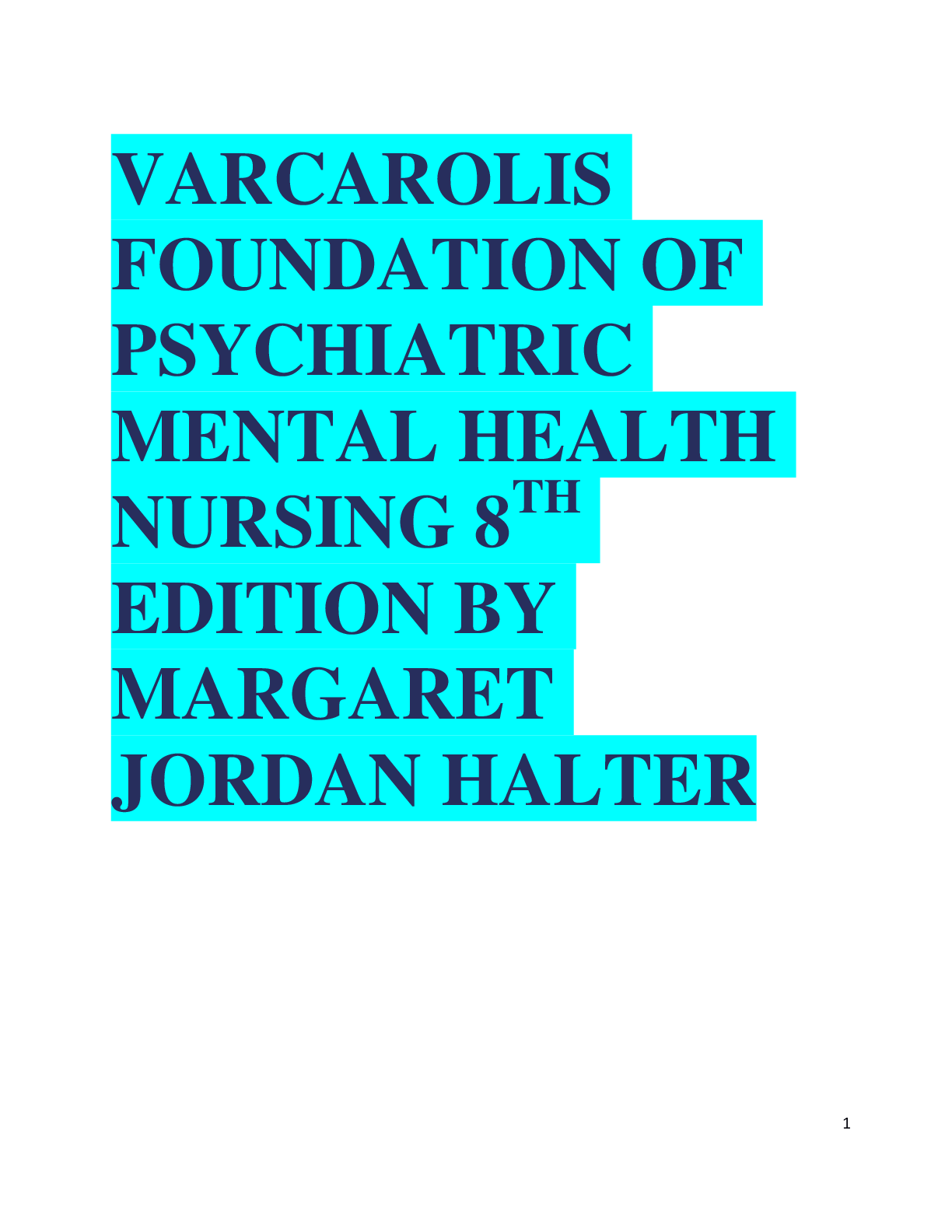

.png)
.png)
.png)
.png)
.png)
.png)
.png)
.png)
.png)
.png)
.png)
.png)
.png)
.png)
.png)

